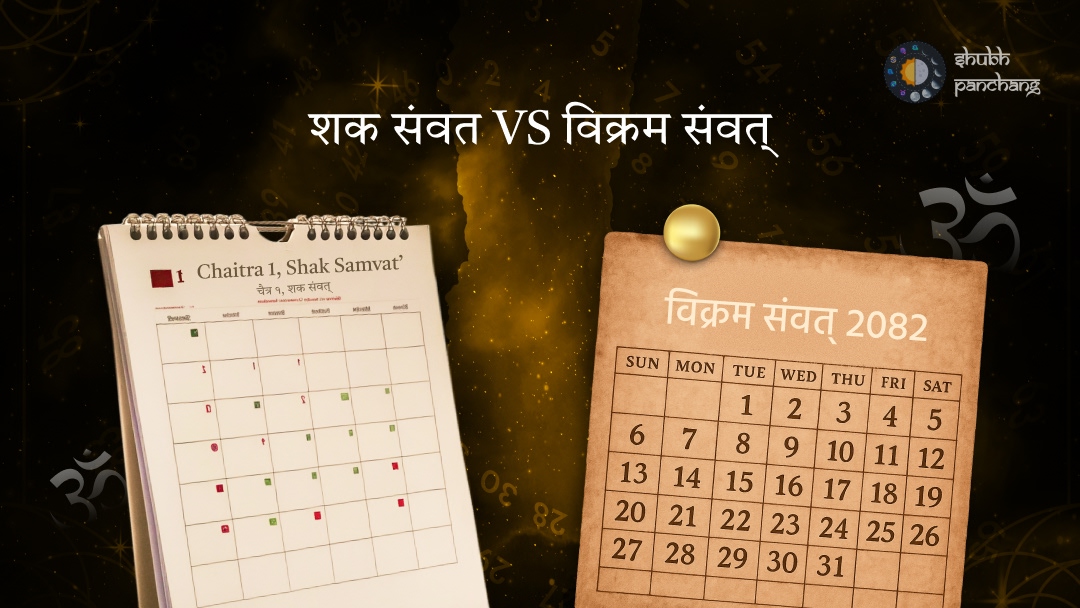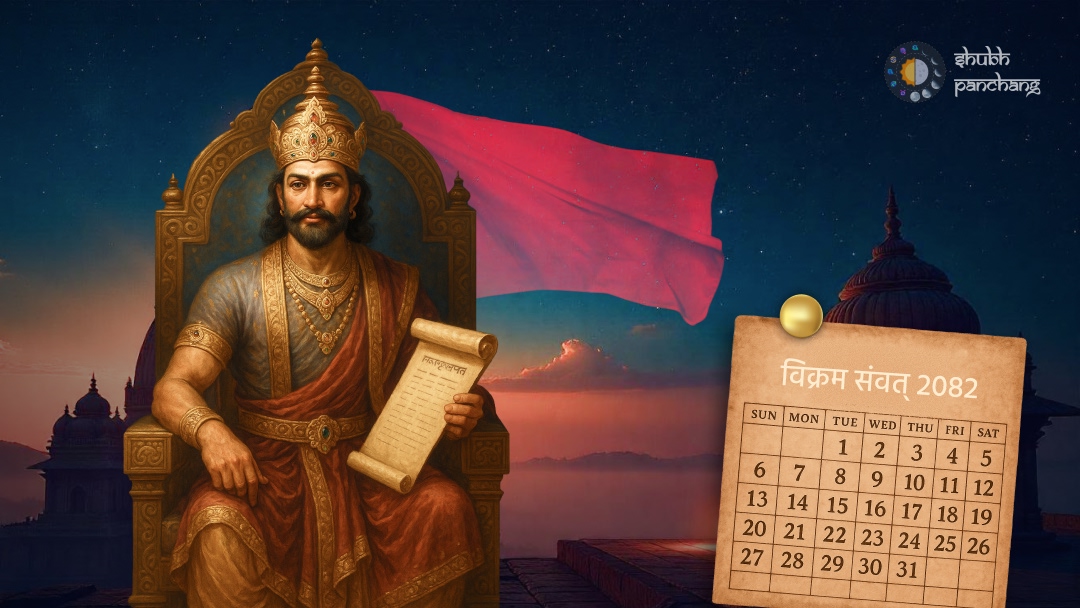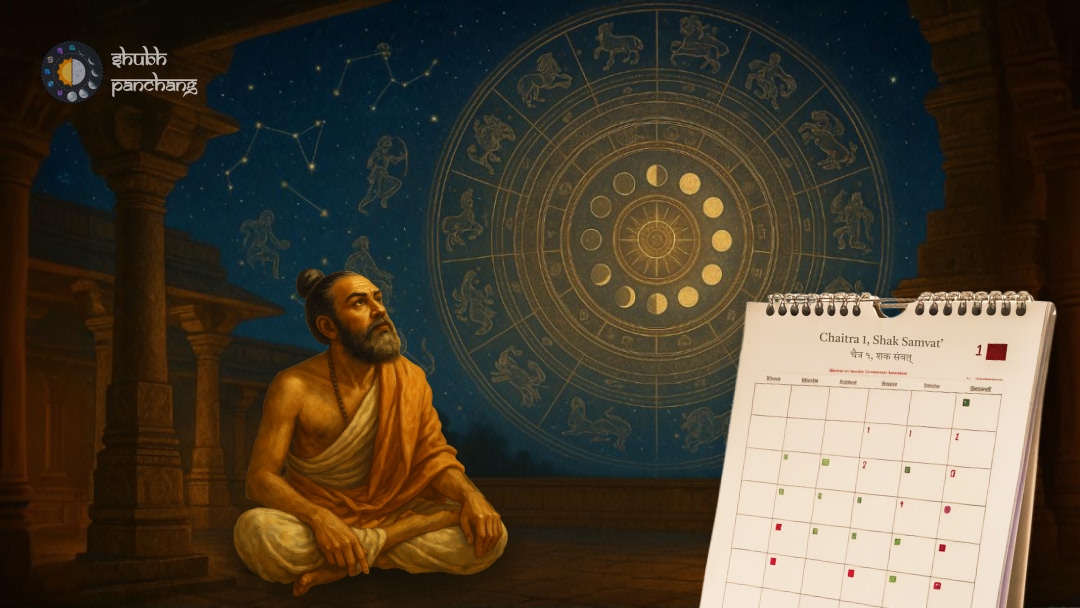
Unveiling India's Timekeepers: Shak Samvat and Vikram Samvat
Have you ever wondered about the dates in your Hindu calendar or Panchang? It's not as simple as January to December, is it? India boasts a rich tapestry of traditions, and that extends to its calendars! We primarily use two ancient systems: the Shak Samvat and the Vikram Samvat. After years of delving into Vedic texts, I've noticed how crucial understanding these calendars is for grasping the timing of our festivals and rituals. But what if I told you their stories are just as fascinating as the calculations behind them? Let’s explore the differences between these two pivotal calendars. Think of them as different timekeepers, each with its unique history and purpose.
Historical Roots: Kings, Conquerors, and Calendrical Origins
The Vikram Samvat is believed to have originated in 57 BCE, commemorating King Vikramaditya of Ujjain. Legend says he defeated the Shakas and established this era to mark his victory. Interestingly, while the name is linked to Vikramaditya, historical evidence suggests its evolution over time, with various dynasties contributing to its standardization. The Shak Samvat, on the other hand, begins in 78 CE and is often associated with the Saka era, a period of foreign rulers in India. Kanishka, the Kushan emperor, is sometimes linked to its establishment, although this remains debated among historians. Initially, I thought the connection between rulers and calendars was purely symbolic, but then I realized how these calendars also became tools for asserting power and cultural identity.
Astronomical Dance: Lunisolar vs. Solar Calculations
Vikram Samvat: This is a lunisolar calendar, meaning it's based on both the lunar cycle and the solar year. Months begin after the new moon (Amavasya) or the full moon (Purnima), depending on the regional tradition. It incorporates adjustments to align with the solar year, ensuring seasonal consistency. Shak Samvat: This is primarily a solar calendar, meaning it's based on the Earth's revolution around the sun. Months are determined by the sun's transit through different zodiac signs (Rashis). It's known for its relatively consistent structure. After years of practice, I've noticed that understanding the astronomical basis makes the Panchang far less intimidating. It's like having a cosmic GPS!
Regional Rhythms: Where Each Calendar Thrives
The Vikram Samvat is widely used in North India, particularly in regions like Rajasthan, Gujarat, Uttar Pradesh, and Madhya Pradesh. It's deeply ingrained in the cultural fabric of these areas, influencing everything from weddings to business ventures. The Shak Samvat, while less prevalent in daily life, holds official status in India. It's used in government publications, the Gazette of India, and by All India Radio. Wait until you discover how these calendars impact festival dates! For instance, Diwali and Holi dates are primarily determined using the Vikram Samvat, while certain other regional festivals might follow the Shak Samvat. This creates a beautiful blend of traditions, each adding its unique flavor.
The Starting Line: Understanding the New Year Months
This is a crucial difference! The Vikram Samvat usually starts with the month of Chaitra (March-April), marking the beginning of the Hindu New Year in many North Indian communities. The Shak Samvat begins with the month of Chaitra but follows a different calculation, usually falling in March 22nd of the Gregorian calendar (March 21st in leap years). This difference in the starting point means that corresponding dates in the two calendars will always be offset. Initially, this confused me, but then I realized that each starting point reflects a different historical or astronomical significance.
Rituals and Festivals: A Timekeeping Guide
Both calendars play a significant role in determining auspicious timings (Muhurat) for various ceremonies. Weddings, housewarming ceremonies (Griha Pravesh), and other important events are often scheduled based on the positions of planets and constellations as per these calendars. Hindu festivals are deeply interwoven with the lunisolar cycles of the Vikram Samvat. Diwali, Holi, Navratri, and many others are timed according to specific Tithis (lunar days) and Nakshatras (constellations) within this calendar. The Shak Samvat influences certain regional festivals and is vital for astronomical calculations used in creating Panchangs. For instance, the position of the sun in different Rashis (zodiac signs) as per the Shak Samvat impacts the observance of Makar Sankranti. What’s fascinating is that different families and communities might prioritize one calendar over the other, leading to slight variations in festival dates and rituals.
Relevance Today: Blending Tradition with Modern Life
Today, while the Gregorian calendar dominates our daily lives for administrative purposes, the Vikram Samvat and Shak Samvat remain essential for religious and cultural observances. The Vikram Samvat continues to guide festival celebrations, marriage dates, and other auspicious occasions, especially in North India. The Shak Samvat, with its official status, finds use in government documents and academic settings, preserving its historical and astronomical importance. But what if I told you understanding these calendars can also improve your personal timing? By aligning important decisions with auspicious dates as per the Panchang, you can tap into the cosmic energies for greater success.
Embracing Our Heritage: Why Understanding Matters
Understanding the distinction between the Shak Samvat and Vikram Samvat is not just an academic exercise; it's about connecting with our cultural heritage. It allows us to appreciate the wisdom of our ancestors and the intricate astronomical knowledge embedded in these calendars. Moreover, knowing which calendar is being used in a specific context—be it a religious ceremony or a government publication—prevents confusion and ensures accurate timing. So, the next time you look at a Hindu calendar, remember the rich history and astronomical calculations behind those dates. Embrace the timekeeping traditions of India—they're more than just dates; they're a connection to our past and a guide for our future. Dive deeper into the Panchang, explore the nuances of each calendar, and discover how they can enrich your understanding of Hindu traditions and practices. This is the challenge: to use this knowledge to live more consciously, aligned with the rhythms of the cosmos.







